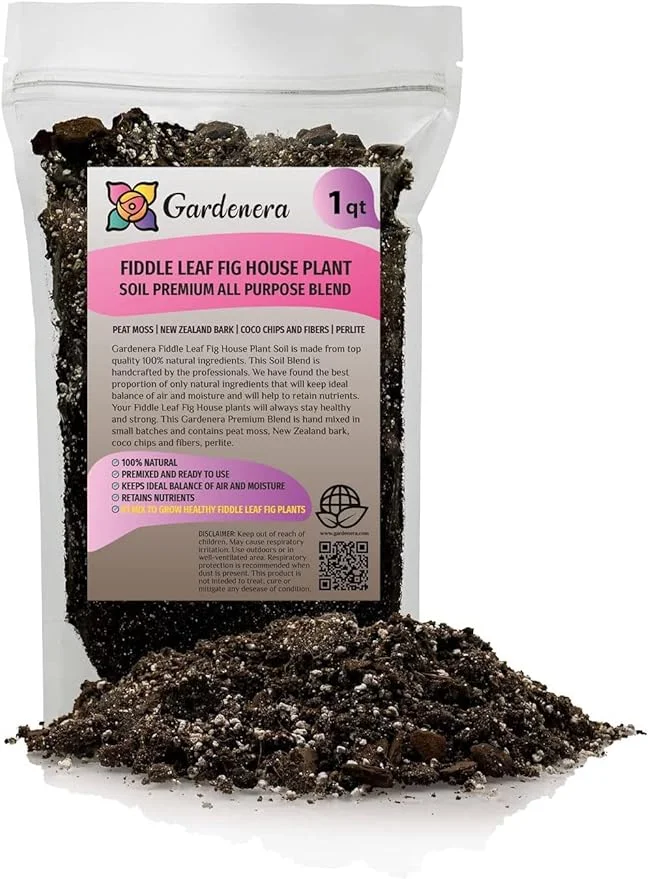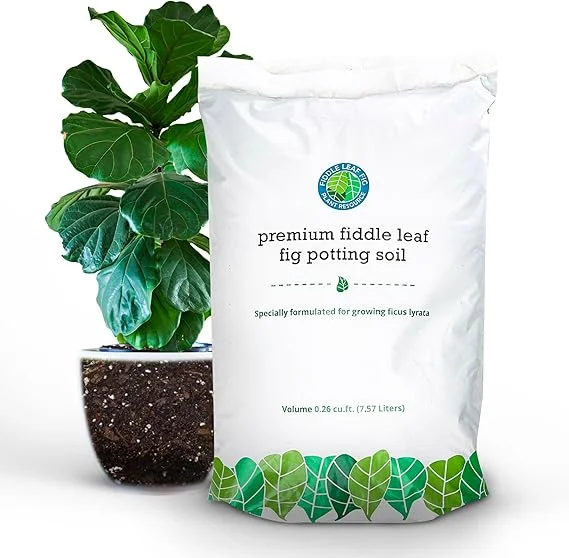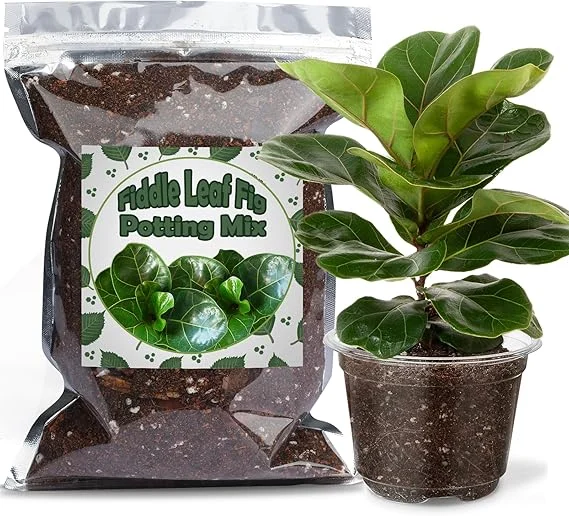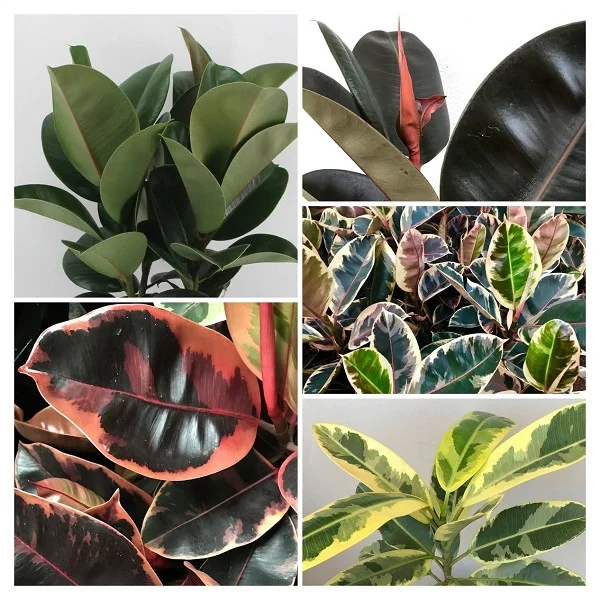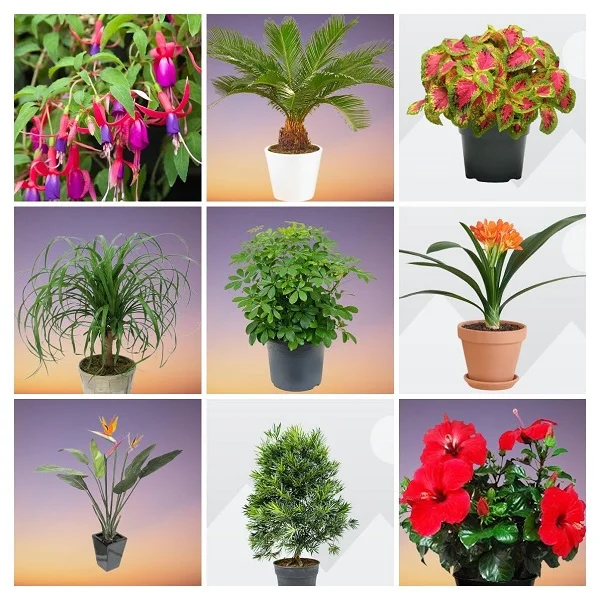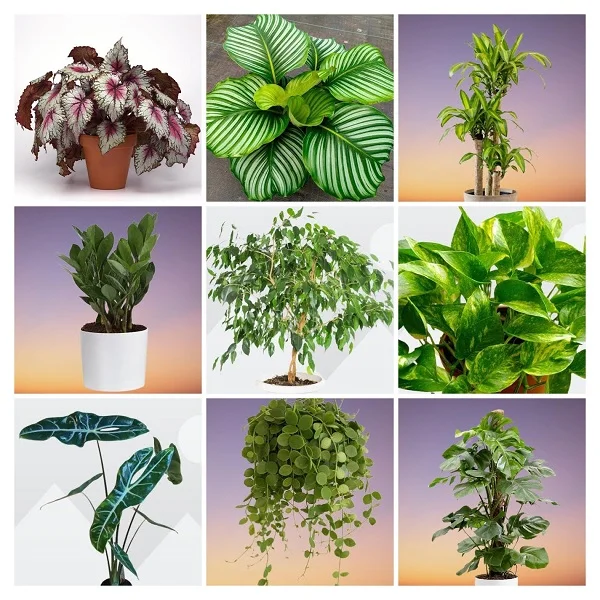Ficus lyrata (Fiddle Leaf Fig) Indoor Care, Common Problems and their Remedies
Some links in this post may be affiliate links
Ficus lyrata (Fiddle Leaf Fig) thrives in bright light with some sunlight, average warmth and humidity, and moderately moist, rich, well-drained soil coupled with monthly feeding in the growing season.
Fiddle Leaf Fig is among the best large-leafed statement plants where the striking, large, violin-like leaves make a great conversation starter. The leaves are up to 1.5 feet long, leathery in texture, have prominent veins and a wavy margin.
Ficus lyrata is one of the popular Ficus varieties on account of its ability to easily adapt to indoor growing conditions as well as less than perfect growing conditions.
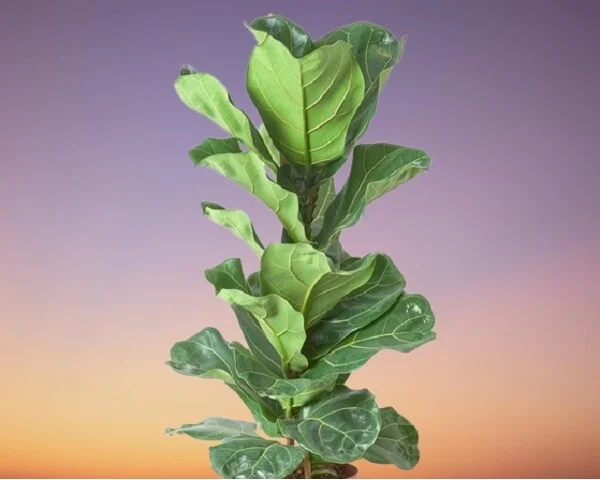
Botanical name: Ficus lyrata
Family: Moraceae
Common name: Fiddle Leaf Fig
Origin
Ficus lyrata is native to western Africa from Cameroon West to Sierra Leone, where it grows in lowland tropical forests.
Size
When grown in a container Fiddle Leaf Fig can grow to a height of 6-10 feet. The leaves are about 1.5 feet long. On account of its size, it is one of the best indoor trees for the home.
Is Fiddle Leaf Fig toxic?
Yes. According to Petal Republic, Fiddle Leaf Fig is toxic to both humans and pets if ingested. It produces a sap that may cause skin irritation on sensitive skin. Always wear gloves when handling this plant.
Where to Buy
Ficus lyrata is a magnificent plant to add to your plant collection. You may acquire these plants online from Amazon (Link to Amazon) or from (Link to Etsy).
How do you care for a Ficus lyrata indoors?
To care for a Ficus lyrata indoors, give it bright light with 4-6 hours of sunlight, warmth of 15-260C, humidity of 50-55% and moderately moist, fertile, well-drained potting soil coupled with monthly feeding in sping and summer.
Fiddle Leaf Fig also requires regular pruning to keep it neat and to encourage a bushy growth. Repotting is only needed when it becomes pot-bound. Keep reading for more on these growing conditions and how to achieve them.
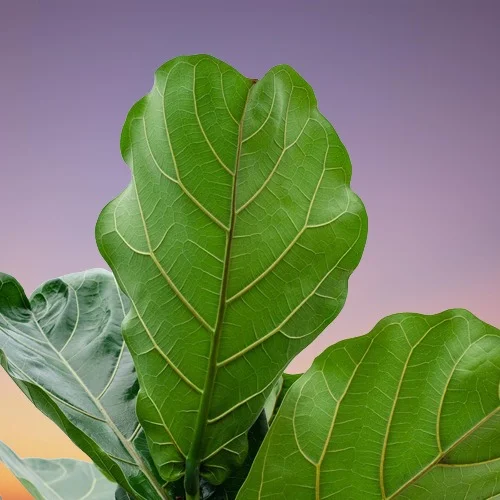
Watering
How often should I water a Ficus lyrata?
Water your Ficus lyrata liberally in spring and summer and allow the top 2-3 inches of soil to dry out between waterings. Keep the soil moderately moist and avoid overwatering as it can lead to yellowing and leaf drop.
Lessen watering in fall and winter to maintain the soil barely moist as growth is minimal at this time. However, do not allow the soilball to dry out completely to prevent wilting, drooping and leaf loss.
Use tepid (room temperature) water to avoid cold shock which can lead to slowed growth and leaf fall. Confirm that the water is free of chlorine and other dissolved chemicals to prevent staining of the leaves.
Ensure that the pot has a drainage hole and the soil is free-draining to avoid soggy soil as it can result in root-rot. In addition, always discard excess water from the catch plate after watering.
Light Requirements
Where should I place my Ficus lyrata
Ficus lyrata grows best in bright light with 4-6 hours of direct sunshine; place it infront of a large bright window which receives some morning or late afternoon sunlight. However, keep it away from hot midday sunshine as it can lead to scorching of the leaves.
Too little light will cause the plant to drop its leaves and if the conditions are not corrected, it die. Therefore, where the natural lighting is not enough, you may use full spectrum grow lights to supplement it.
Rotate the pot regularly to ensure that the plant receives light on all sides for even growth to prevent lopsided growth.
Temperature & Humidity
Ficus lyrata flourishes in an average warmth of 15-260C. Keep it away from drafts to avoid flactuations in temperature as they can lead to stunted grotwh, yellowing and leaf drop.
Fiddle Leaf Fig requires a moderate humidity of 50-55%. If the air is too dry it may result in browning of leaf tips and edges. To increase humidity, set the pot on a wet pebble tray, group the plants together ot use a cool mist humidifier. To discourage fungal diseases, maintain a good air flow.
Fertilizer
Feed your Fiddle Leaf Fig monthly with a balanced, water-soluble fertilizer in spring and summer to promote a lush growth. Withhold feeding in fall and winter to prevent fertilizer burn as growth is reduced at this time, thus, the plant does not need it.
Soil Mix
The best Ficus lyrata soil mix should be rich and well-draining to prevent it from getting soggy while providing the required nutrients. A blend of 2 parts organic potting mix and 1 part perlite (for drainage) is ideal for this plant.
If you do not wish to do the mixing yourself, you may go for those potting mixes specifically designed for the Fiddle Leaf Fig or those designed for Aroids. Check out these 10 Fiddle Leaf Fig potting mixes that are ready for use.
Repotting
Repot your Ficus lyrata at the beginning of the growing season (spring to early summer), only when pot-bound. Avoid frequent repotting as it prefers to be slightly pot-bound. Repot only when it has outgrown its current pot; when roots begin to grow through the drainage holes.
Select a pot only 1 size larger than the current one to avoid overpotting which can lead to retention of too much moisture resulting in rotting and death of the plant. Use a pot that has a drainage hole and a well-draining soil to avoid waterlogging as it can lead to root-rot.
Pot your Fiddle Leaf Fig in a heavy pot as it can become top-heavy and topple over. Check out these ceramic pots with drainage hole on Amazon.
For the large plants which may be difficult to handle, annually replenish the top 2-4 inches of soil with fresh, well-drained potting soil.
Pruning & Grooming
Pruning Fiddle Leaf Fig entails removal of dead and yellow leaves to keep the plant neat as well as reduce pest and disease infestations.
How do I make my Ficus lyrata bushy?
When the plant has reached maximum height or it has become leggy, cutback the stem to rejuvenate growth. Fresh new shoots will sprout below the cut making the plant more bushy and compact. You may use the foliage emanating from prunings to propagate new plants.
Occasionally clean the leaves by damp-wiping with a soft cloth to get rid of dust and discourage pest infestation. Read more on how to clean houseplants.
Ficus lyrata Propagation
Fiddle Leaf Fig (Ficus lyrata) is best propagated at the beginning of the growing season by air layering or from stem cuttings which can be rooted either in water or in soil.
Read more on How to Propagate Fiddle Leaf Fig (Ficus lyrata) by 3 Propagation Methods.
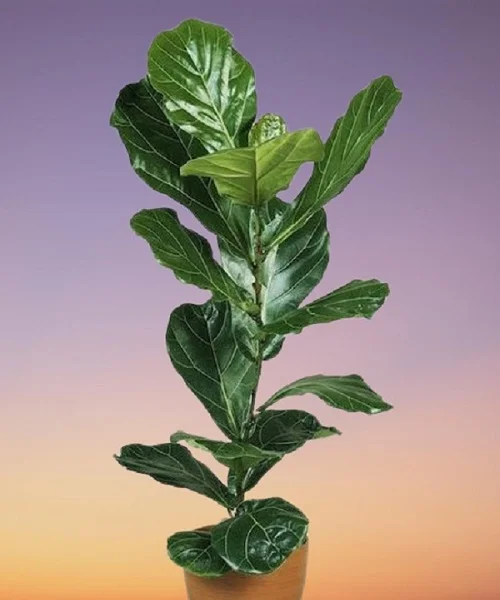
Ficus lyrata Problems
Ficus lyrata (Fiddle Leaf Fig) problems are browning & leaf drop, yellow leaves, pests and diseases among others. Keep reading for more on these problems and how to fix them.
Browning & leaf drop
Why are the leaves on my Ficus lyrata turning brown and falling off?
The leaves on your Ficus lyrata are turning brown and falling off due to inconsistent watering, soggy soil, temperature stress, too little light, fertilizer burn or aging.
How to fix it
Inconsistent watering: Do not water on schedule; water when the top 2-3 inches of soil feel dry and do not allow the soil to dry out completely.
Soggy soil: Use a pot with a drainage hole and well-draining soil.
Temperature stress: Keep the plant away from sources of drafts like windy doors, drafty windows, AC units, hot air vents, heat sources among others.
Too little light Move the plant to a brighter spot where it will receive bright light with 4-6 hours of sunshine or instal a grow light if natural light is not adequate.
Fertilizer burn: Feed the plant monthly with a balanced, water-soluble fertilizer in spring and summer but do not feed in fall and winter as growth is minimal at this time.
Aging: As the plant matures, it losses the lower leaves leaving a bare stem with a crown of leaves at the top. Cutback the stem at the desired height to rejuvenate growth. New growth should emerge just below the cut.
Related Content: 14 Reasons Why Rubber Plant is Losing Leaves & How to Fix Them.
Yellow leaves
The main causes of yellow leaves on Ficus lyrata are too little light, soggy soil, inconsistent watering, drafts, nutrients deficiency or aging.
How to fix it
Too little light: Position the plant in bright light with 4-6 hours of sunlight or use a grow light if you do not have sufficient light in your home.
Soggy soil: Use a free-draining soil and a pot that has a drainage hole.
Inconsistent watering: Water when the top 2-3 inches of soil feel dry but do not allow the soil to dry out completely. Do not water on schedule.
Drafts: Keep the plant away from sources of drafts like hot air vents, AC units, hot surfaces, windy doors among others.
Nutrients deficiency: Feed the plant with a balanced, water-soluble fertilizer every 4 weeks in spring and summer.
Aging: This is a natural process. As the plant matures the older leaves turn yellow, brown and eventually drop off.
Pests
Common pests on Ficus lyrata are aphids, mealybugs, scales and spidermites which are more prevalent in dry, stuffy conditions.
How to fix it
- Isolate the affected plant to prevent spread to other plants.
- Treat the infested plant with neem oil or an insecticidal soap as per the manufacturers' instructions.
- Keep the plant properly pruned at all times to reduce the hiding places for these pests.
- Regularly check underneath and between the leaves for these pests and carry out timely control measures.
- To minimize the pests infestations, group the plants together or set the pot on a wet pebble tray to elevate humidity.
- Maintain a good air circulation to discourage the pests.
Diseases
Ficus lyrata is prone to root-rot disease. The disease is promoted by soggy soil due to poor drainage of the pot or the soil.
How to fix it
- Slip the plant out of its pot and inspect the roots; brown mushy roots indicate root-rot.
- Cut the brown-black roots and treat the healthy roots with a copper-based fungicidal solution as indicated by the manufacturer.
- Repot the plant in fresh, well-draining soil and keep it dry for some time before resuming watering.
- Confirn that the pot has a drainage hole to prevent the soil from getting soggy.
- Reduce watering in fall and winter since growth is minimal at this time, thus, the plant does not need much water.
You liked it? Share on social media.
Related Content
Amazon Associates Disclosure
Homeplantsguide.com is a participant in the Amazon Services LLC Associates Program, an affiliate advertising program designed to provide a means for sites to earn advertising fees by advertising and linking to amazon.com.
